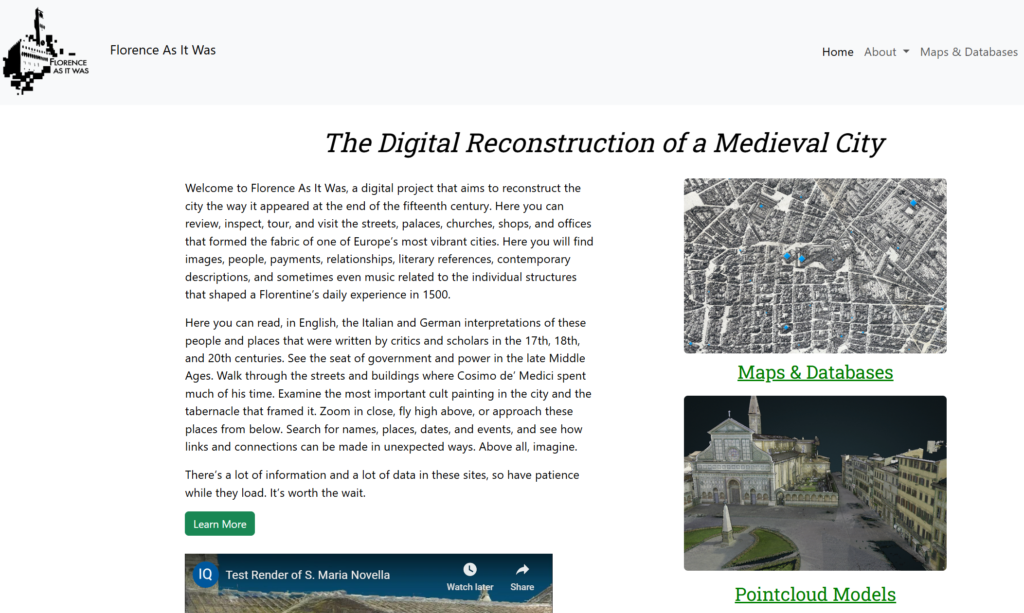
https://florenceasitwas.wlu.edu
Florence As It Was combines three-dimensional models of Medieval and early Modern buildings, digitized documents, photogrammetric models of 230 art works, translations of early modern descriptions, and original interpretative essays in an academic, not-for-profit, web-based platform that aims to recreate major monuments of the Tuscan city as they appeared in the year 1500. Models may be navigated, measured, and cut away by users at their discretion without compromising their own computer storage capacities. Complete with a geo-referenced database of nearly 2000 images (searchable by artist name, title, date of installation, subject, patron, and iconography), users may also use a high-resolution map of the city produced in 1584 locate and see artworks in their original locations as they appeared to audiences in the fifteenth century.
Laser scanners have been employed to scan the interiors and facades of select buildings in the city. Paintings produced before and after 1500 are used to recreate the exteriors of churches, municipal offices, and city gates. Original interpretative essays are embedded into these reconstructed structures to explain why a specific object looks the way it does, why a specific artist was commissioned to produce it, who looked at it, and what they said and did in front of it. Literary passages, tax records, and musical performances will be added through ‘hotspots’ that will soon allow writers, notaries and musicians to speak for themselves.
